Every year, over 150,000 pets in the U.S. end up in emergency vet clinics because they ate something they shouldn’t have - and the #1 culprit isn’t chocolate or grapes. It’s human medication. Dogs and cats don’t know the difference between your pill and their treat. A single Advil, a dropped Xanax, or a spilled bottle of antidepressants can turn a normal day into a life-or-death situation. The good news? If you know what to look for, you can act fast - and save your pet’s life.
Why Human Medications Are So Dangerous for Pets
Your body and your pet’s body process drugs in completely different ways. What’s safe for you can be deadly for them. Cats, for example, lack the enzyme needed to break down acetaminophen (Tylenol). Even a tiny amount - as little as one 500mg tablet - can poison a cat. Dogs don’t handle NSAIDs like ibuprofen or naproxen well either. Their kidneys and stomachs can’t process these drugs like ours can. And then there are the psychiatric meds: antidepressants, ADHD pills, and anxiety drugs. These hit pets’ nervous systems like a sledgehammer.According to the Pet Poison Helpline, human medications cause nearly 3 out of every 10 pet poisonings. Dogs make up 85% of those cases - they’re curious, fast, and will eat anything that smells like food. Cats are trickier. They’re more selective, but when they do get into meds, it’s often worse. A single extended-release Effexor capsule can kill a cat. Why? Because their liver can’t detoxify it. That’s why recognizing symptoms early isn’t just helpful - it’s critical.
Signs of Overdose: What to Look For
Symptoms vary wildly depending on the drug. But here’s how to break it down by type - and what to watch for in the first few hours.Antidepressants (SSRIs like Prozac, SNRIs like Effexor)
These are among the most common and dangerous. Symptoms usually show up within 1 to 12 hours. Look for:- High fever (103°F to 106°F)
- Shaking, tremors, or muscle stiffness
- Fast heart rate (over 160 bpm in dogs)
- Agitation, pacing, or vocalizing
- Dilated pupils
- Seizures (in severe cases)
Effexor is especially deadly for cats. One capsule can cause liver failure. In dogs, serotonin syndrome - a dangerous buildup of serotonin - can lead to seizures if untreated. The key? Don’t wait for seizures. If your dog or cat is acting unusually anxious, hyper, or feverish after you dropped a pill, assume it’s an overdose until proven otherwise.
ADHD Medications (Adderall, Concerta, Ritalin)
These are stimulants. They hit pets hard and fast. Symptoms can appear in as little as 15 minutes.- Extreme restlessness or hyperactivity
- Heart rate over 220 bpm (normal is 60-140)
- Body temperature above 107°F
- Severe tremors or muscle twitching
- Dilated pupils
- Vomiting or drooling
These drugs are among the most lethal. A single Adderall pill can be fatal to a small dog. The body overheats, the heart races out of control, and organs start shutting down. If you catch this early - within the first hour - your vet can induce vomiting and give activated charcoal to stop absorption. After two hours, it’s a much harder battle.
NSAIDs (Ibuprofen, Naproxen, Aleve)
These are the most common pet poisonings overall. People think they’re harmless - until their dog eats a whole bottle. Symptoms start within 1 to 6 hours:- Vomiting (92% of cases)
- Black, tarry stools (sign of internal bleeding)
- Lethargy or weakness
- Loss of appetite
- Increased thirst and urination (early kidney warning)
- Eventually: kidney failure, with BUN levels above 120 mg/dL (normal is 10-25)
Dogs can tolerate small doses of ibuprofen - but not much. Toxic dose starts around 50mg per kg. A 20-pound dog eating just two 200mg pills is in danger. Cats? Even 5mg per kg can kill. There’s no safe amount for them. If your pet is vomiting and acting tired after you took pain meds, don’t assume it’s just a stomach bug.
Acetaminophen (Tylenol)
This is the silent killer - especially for cats. Dogs are more resilient, but still at risk.In cats:
- Brown or blue-tinged gums (methemoglobinemia)
- Swelling in the face or paws
- Difficulty breathing
- Lethargy, vomiting, dark urine
Just 10mg per kg can be fatal. A single 325mg tablet is enough for an average cat. The liver can’t process it, and red blood cells start dying. If you see brown gums - that’s a red flag. No other toxin causes this exact sign.
In dogs:
- Vomiting, drooling
- Lethargy
- Yellow gums or skin (jaundice)
- Difficulty breathing
- ALT liver enzymes above 1,000 U/L (normal: 10-100)
Toxic doses start around 150mg per kg. But don’t wait for symptoms. If your dog ate Tylenol, call your vet immediately - even if they seem fine.
Benzodiazepines (Xanax, Ambien, Klonopin)
You might think these make pets sleepy. But in dogs, they often do the opposite.- Agitation, pacing, aggression (52% of cases)
- Uncoordinated walking
- Low body temperature
- Slow breathing
- Coma (in high doses)
Cats are even more vulnerable. These drugs can cause severe liver damage. One Ambien tablet can send a cat into hepatic failure. Vomiting, jaundice, and extreme lethargy follow within 24-48 hours. The paradoxical reaction in dogs - where sedatives cause hyperactivity - trips up a lot of owners. They think, “It’s just acting weird,” and wait too long.
What to Do If You Suspect an Overdose
Time matters. 93% of pets survive if treatment starts within two hours. Here’s what to do right now:- Don’t wait. Don’t wait to see if symptoms get worse. Don’t wait to call your regular vet if they’re closed. Call a poison control center immediately.
- Call Pet Poison Helpline (1-800-213-6680) or ASPCA Poison Control (888-426-4435). Both are staffed 24/7. Average response time is under a minute.
- Have details ready: What drug? How much? When? Your pet’s weight? Any symptoms?
- Don’t induce vomiting unless told to. Some drugs (like benzodiazepines) can cause choking if vomited. Some (like acids) can burn the throat on the way back up.
- Bring the bottle. Even if it’s empty. The label tells the vet the exact dose and formulation (extended-release? chewable?) - which changes treatment.
If you’re driving to the vet, call ahead. Tell them you’re coming with a suspected overdose. That way, they can prep IV fluids, antidotes, or monitoring equipment before you arrive.
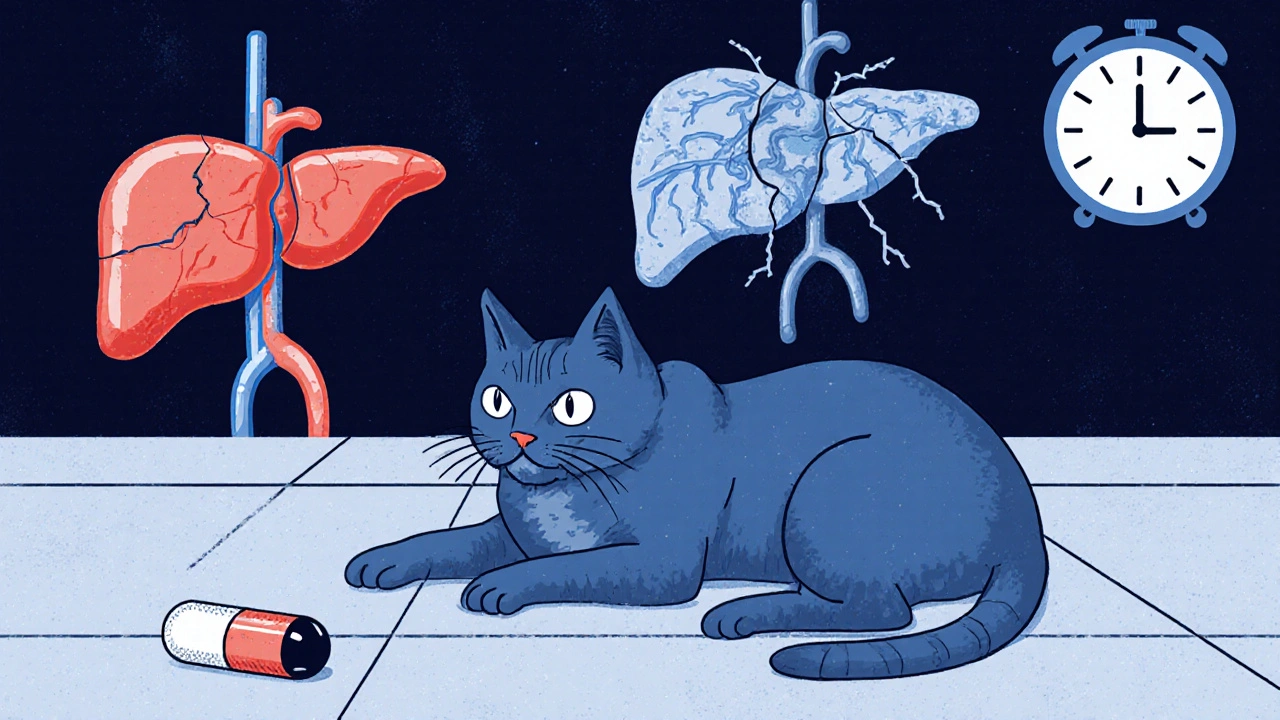
How to Prevent This From Happening
Prevention is the best medicine.- Keep all meds in closed cabinets - not on counters or nightstands. Dogs can jump. Cats can climb. A pill on the edge of a dresser is a death trap.
- Never leave pills in purses, pockets, or bags. Pets love to chew on them.
- Use childproof caps - even if you’re not a parent. They’re harder for pets to open.
- Don’t give your pet human meds. Not even a baby aspirin. Not even “just one.” Your vet can prescribe safe, effective alternatives.
- Know your pet’s weight. If you ever need to call poison control, you’ll need it.
- Download the ASPCA Poison Control app. It has a symptom checker and instant access to experts.
What Veterinarians Want You to Know
Dr. Ahna Brutlag of Pet Poison Helpline says: “The most reliable sign isn’t vomiting or tremors - it’s timing. If your pet started acting strange within 2 hours of you taking a pill, it’s likely connected.”Dr. Justine Lee, a top emergency vet, adds: “I’ve seen owners wait hours because they thought their dog was just ‘excited’ or ‘nervous.’ Those tremors? That’s not anxiety. That’s a chemical overdose.”
And here’s the hard truth: 68% of pet owners misidentify early symptoms. They think shaking means cold. They think pacing means the dog missed a walk. They think vomiting is from eating grass. But in a pet, those signs can mean organ failure is already starting.
The bottom line? If your pet ate something they shouldn’t have - and you’re not 100% sure what - treat it like an emergency. Don’t Google it. Don’t wait. Call the poison helpline. Save time. Save money. Save your pet’s life.
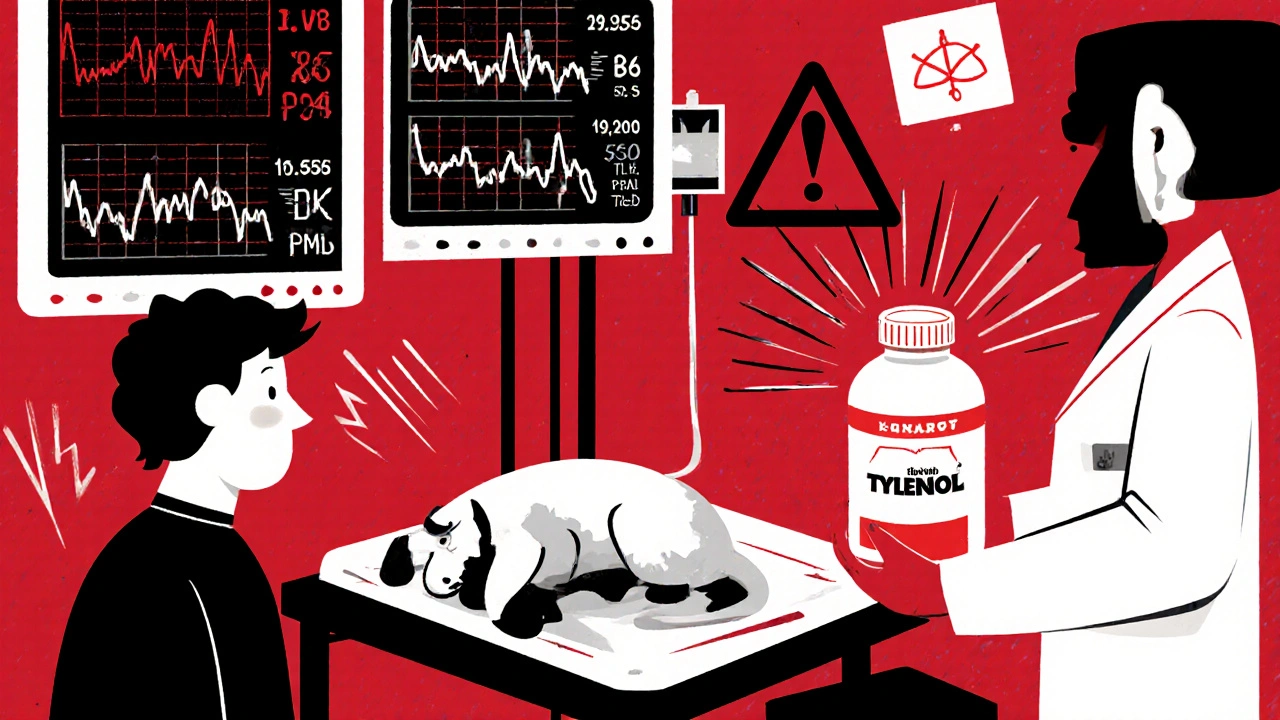
When to Expect the Worst
Some overdoses don’t show symptoms right away. That’s the scariest part.- NSAIDs: Kidney damage can take 24-72 hours to show up. Your pet may seem fine - until they collapse.
- Acetaminophen in cats: Liver failure can take 12-48 hours. Brown gums mean it’s already too late.
- Extended-release pills: Effexor XR, Adderall XR - these release poison over 12-24 hours. One pill can keep poisoning your pet for a full day.
Even if your pet seems okay after 4 hours, don’t relax. Keep watching. If they stop eating, start vomiting, or seem unusually tired 12-24 hours later - get them checked. Organ damage doesn’t always come with a siren.
What Happens at the Vet
If you make it to the clinic in time, here’s what usually happens:- Decontamination: Activated charcoal to absorb toxins, or induced vomiting (if safe).
- IV fluids: To flush kidneys and support circulation.
- Medications: Antidotes like N-acetylcysteine for acetaminophen, or cyproheptadine for serotonin syndrome.
- Monitoring: Heart rate, temperature, blood pressure, liver/kidney values.
- Supportive care: Oxygen, seizure control, warming blankets.
Costs vary. A simple case might run $500-$1,000. A severe one - with organ failure - can hit $5,000-$10,000. Prevention is cheaper than treatment. Always.
Can my pet die from eating one pill?
Yes. One pill can be fatal, especially for cats. A single Effexor capsule, one Tylenol tablet, or half an Adderall pill can kill a small pet. Toxicity depends on the drug, your pet’s size, and their species. Never assume a small amount is safe.
What should I do if my dog ate ibuprofen but seems fine?
Call poison control immediately. Ibuprofen can cause stomach ulcers and kidney failure without showing symptoms for 12-24 hours. Even if your dog is acting normal, internal damage may already be starting. Don’t wait for vomiting or lethargy - act now.
Can I give my pet aspirin or Tylenol for pain?
No. Never give human pain relievers without veterinary approval. Even baby aspirin can cause bleeding in dogs, and Tylenol is deadly for cats. There are safe, vet-approved pain meds for pets - ask your vet for them.
How fast do symptoms appear after ingestion?
It depends on the drug. Stimulants like Adderall cause symptoms in 15-30 minutes. Antidepressants take 1-12 hours. NSAIDs and acetaminophen can take 6-72 hours. If your pet ingested anything suspicious, assume symptoms could appear within 2 hours and monitor closely for 3 days.
Are there apps or tools to help recognize overdose symptoms?
Yes. The ASPCA Poison Control app has a symptom checker and 24/7 access to toxicology experts. The Pet Poison Helpline also offers real-time chat support. These tools help you match symptoms to specific drugs and tell you whether to rush to the vet or wait.
What if I don’t know what my pet ate?
Call poison control anyway. Tell them what you saw: vomiting, tremors, agitation, brown gums. They can help you narrow it down based on symptoms. Even without knowing the drug, early intervention can save your pet’s life.
Is it safe to wait and see if my pet gets better on its own?
No. Medication overdoses don’t resolve on their own. The longer you wait, the more damage is done to organs. By the time symptoms are obvious, it’s often too late for simple treatments. Acting within two hours gives your pet the best chance.
Why do cats react worse to some meds than dogs?
Cats lack certain liver enzymes that break down drugs like acetaminophen and benzodiazepines. Their bodies can’t detoxify these substances, so toxins build up quickly. Dogs have better metabolic pathways for many drugs, but still can’t handle NSAIDs or stimulants safely. Species differences matter - never assume what’s safe for one is safe for the other.
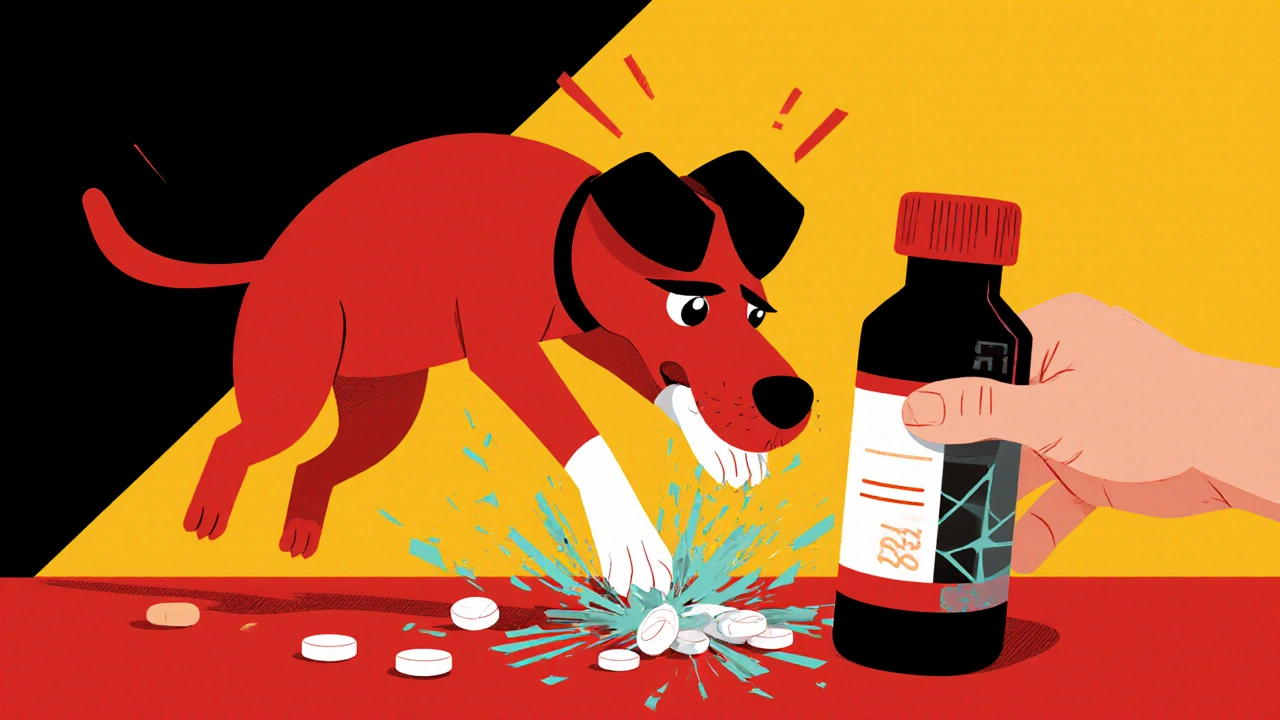
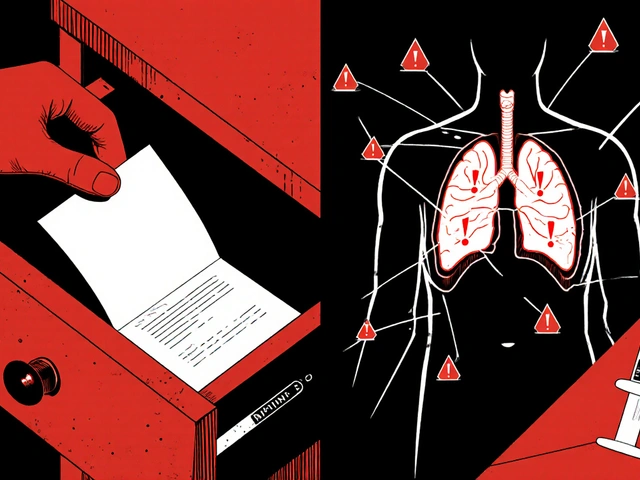

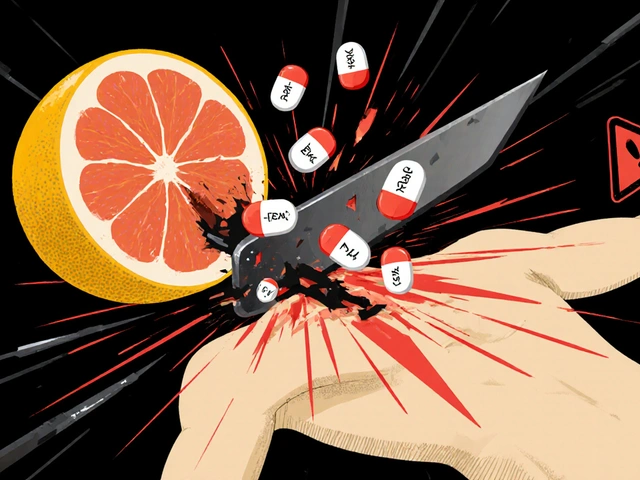
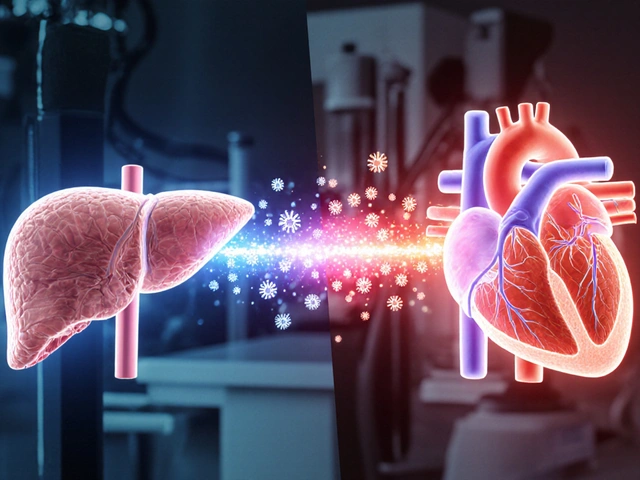
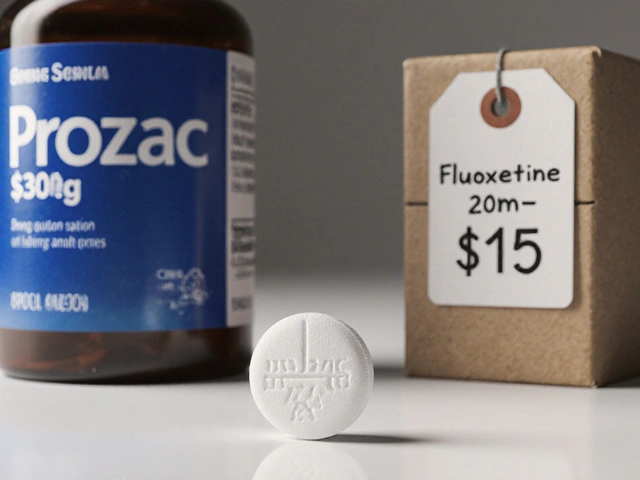
bro i just saw my dog eat my Adderall and i laughed bc he looked like a cartoon character 😂 then i panicked and drove to the ER. he’s fine. don’t be an idiot like me.
November 21Sheldon Bazinga